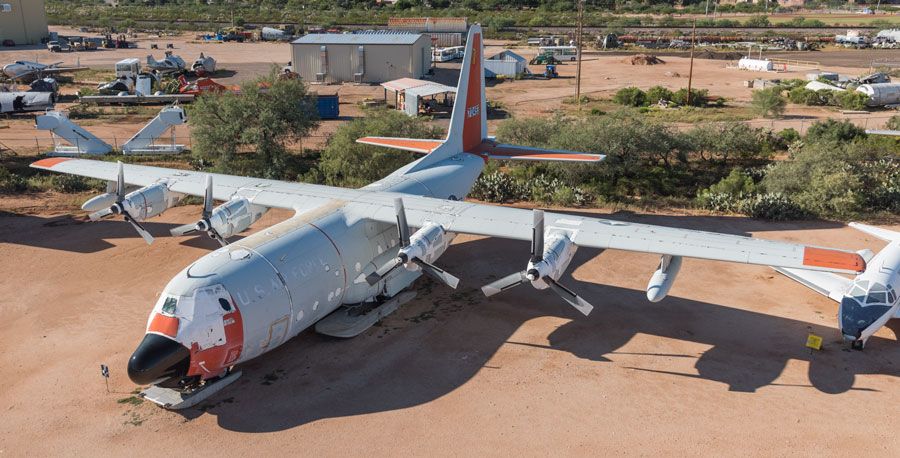Lockheed C-130D Hercules
The “D” model of the Lockheed C-130 is a prime example of the adaptability of the Hercules. In the late 1950s the Air Force determined that there was a need for a new aircraft to support the “DEW Line” early-warning radar sites located on the far northern ice cap. Testing proved that the C-130 could be easily adapted to this job. A total of twelve ski-equipped C-130Ds were built in 1958. The ski/wheel landing gear allowed the planes to operate from either a normal runway or from ice and snow. The Hercules is the largest aircraft ever equipped with skis. The success of the C-130D in the difficult and dangerous Arctic environment led to the conversion of more “Herks” for the U.S. Navy to support the operation of the numerous research stations in Antarctica. The C-130Ds served until the mid 1980s when they were replaced by newer ski-equipped LC-130Hs.
Wingspan | 132 ft 7 in. |
Length | 97 ft 10 in. |
Height | 38 ft 6 in. |
Weight | 108,000 lbs (loaded) |
Maximum Speed | 383 MPH |
Service Ceiling | 41,300 ft |
Range | 3,215 miles |
Engines | Four Allison T56-A-1A turboprops with 3,750 horsepower each |
Crew | 5 |
Manufacturer
Lockheed
Markings
109th Tactical Airlift Group, New York Air National Guard, Schenectady County Airport, New York, 1984
Serial Number
57-0493
Designation
C-130D
